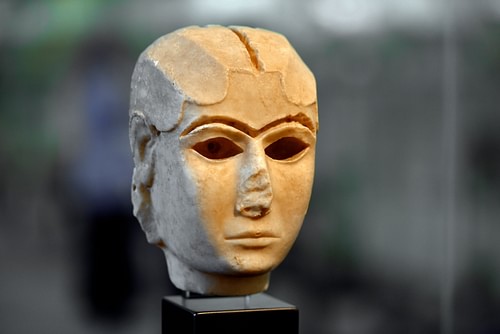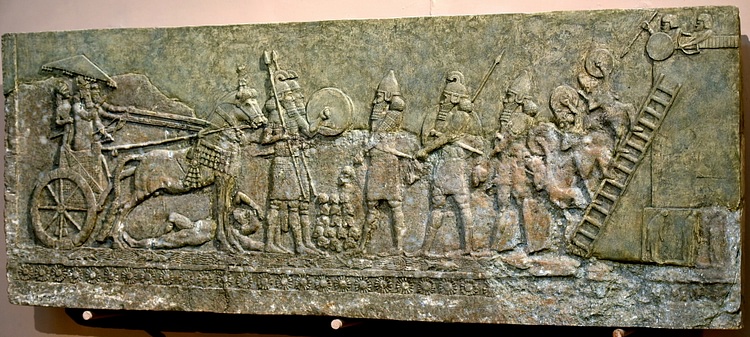This article documents and elaborates on the many critical behind-the-scenes events, unknown to the public, before the history leaves us.
The author
The bulk of the “the land between the two rivers” lies in what we call today the Republic of Iraq. People have been living there, around and between the Euphrates-Tigris system for thousands of years. The earth of this land has been irrigated by these two rivers and throughout several millennia, a multitude of cultures, city-states, and empires flourished in Mesopotamia, resulting in a gradual development in each and every aspect of human life. However, the interaction between them was not always peaceful. Wars, military confrontations, and political coalitions, driven by the perspective of “the victors and the vanquished”, have made the land ever eager for blood instead of water. Throughout the history of the region, no one knows how many people have been killed in clashes between countless different rivals. The last actor in this continuous black comedy was the so-called Islamic State in Iraq and the Levant, which has been irrigating Mesopotamia with different types of blood, from all around the world.
Wars and blood, instead of peace, doves, and flowers, dominated and shaped Mesopotamian history. Iraq, the legitimate heir of this legacy (by the order of destiny), the core of the Cradle of Civilizations, still bleeds. The Iraq Museum in Baghdad was officially opened on June 14, 1926 CE. The current building in Al-Salihiyyah District was completed in 1963 CE. Located within the heart of the Republic of Iraq’s capital city, Baghdad, this great Museum of the human being and humanity’s history has sustained several “life-threatening and function-threatening” events. The Iraq Museum’s existence and persistence have been punctuated by three devastating wars within a relatively short period of time.
The Iraq-Iran War, 1980-1988 CE
A military conflict erupted in September 1980 CE between Iraq and its neighbor, Iran, resulting in the longest war in the 20th century. The war lasted for 8 years and ended on August 8, 1988 CE. These 8 years left their thumbprint on Mesopotamian history and resulted in a negative impact on the Iraq Museum. According to Iraqi laws, museums should close in wartime. At the beginning of the 1981 CE, the contents of the galleries of the Iraq Museum were packed and stored inside the museum itself. The large Assyrian stone slabs and several statues were left in situ, protected by foam and sandbags. This had rendered the museum virtually inactive; however, it was not closed officially. People simply ceased visiting the museum, as the galleries were somewhat empty. In 1983 CE, the construction of a new wing had increased the number of the museum’s halls and galleries from 13 to 23; the Babylonian-Chaldean, Hatra, Islamic, Manuscripts, and Coins halls received the bulk of this expansion. Some of the stored contents were re-displayed again and the new galleries were filled in with many artifacts. However, this short period was terminated rapidly with the escalation of the war. Once again, the relics were packed and stored and the museum’s halls were lifeless. Luckily, the Museum escaped damage incurred by the so-called “War of the Cities” between 1984-1988 CE (where both Iraq and Iran bombarded different cities haphazardly, resulting in the deaths of thousands of non-combat civilians and wide-spread civilian infrastructure attrition. When the war ended in August 1988, the museum’s day-to-day operations were mainly administrative; the public was not here.
The Honeymoon, 1998-1990 CE
In spite of a being a peaceful time, from August 8, 1988 CE, to August 2, 1990 CE, the Iraq Museum was in still in a semi-paralyzed state. That period was generally uneventful. However, several archaeological expeditions from many countries started working back on Mesopotamian soil and digging was resumed. The contents of the museum and thus scholarly works and publications regained their health somewhat.
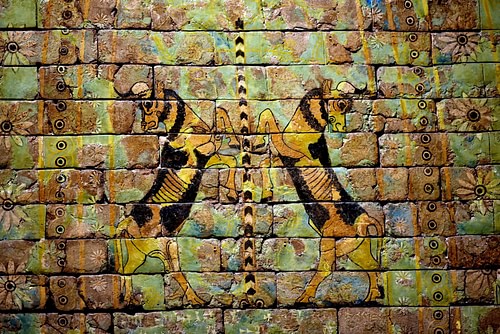
The Invasion of Kuwait, First Gulf War, & Iraqi People Uprising, 1990-1991 CE
In an unexpected move that shocked the World, Saddam Hussein’s Republican Guards invaded its neighbor, supporter, and ally, the State of Kuwait at 2:00 AM (Baghdad Time), on August 2, 1990 CE. A two-day military operation resulted in the occupation of Kuwait, and after a few days, Iraq annexed Kuwait as the 19th Iraqi Governorate. The international community condemned this occupation and on August 8, 1990 CE, the UN Security Council passed resolution 661 which imposed almost-total and very wide-ranged sanctions against the Republic of Iraq. The Iraq Museum, as a government body, received a good share of this blow; each and every aspect of the Iraqi government, non-official bodies, and the public suffered under this economic embargo. The museum, like all other Iraqis, was perplexed and confused about what the future would hold. The galleries were still empty and the public was not interested in “the history” anymore; it was a matter of survival now. Iraq refused to withdraw and the USA organized and led a large international collation of 35 nations to liberate Kuwait. On November 29, 1990 CE, the UN Security Council passed resolution 678 and gave Iraq 47 days (until January 15, 1991 CE) to withdraw from Kuwait; otherwise, the international community could use “all the necessary means” to liberate Kuwait. Once again, Saddam declined and war was inevitable.
“In response, all of the contents of the Kuwait National Museum and the House of Islamic Antiquities were transferred to the Iraqi Museum for safekeeping”, Dr. Muayad Saed Al-Damerchi said (then president of the State Board of Antiquities and Heritage of Iraq). Dr. Al-Damerchi contacted the UNESCO’s Director General via Iraq’s Permanent Representative to the UNESCO, Mr Aziz Al-Haj, about this step. The Kuwaiti collection was composed of about 17,000 objects in addition to a large group of around 7,000 relics, mostly coins. The latter group was “not-registered and not-documented by the Kuwaitis" before the invasion. This Kuwaiti collection intermingled with the Iraqi one and some of them were put inside the galleries. The Iraq Museum’s contents were packed and an emergency plan was set up to counteract the potential future threat. The contents were transferred outside Baghdad, as follows:
1. A complete collection of ancient and historical manuscripts were transferred to and stored in the Qushla Building in Kirkuk in northern Iraq, in addition to some other objects. This building was protected by the local police.
2. The Museum’s collection of clay tablets was transferred to and stored inside the newly built Duhok Museum in northern Iraq. This museum was empty and was not opened yet. The building was guarded by the local police.
3. The Museum’s official documents were transferred to and stored in a hotel near the ancient city of Hatra, in modern-day Mosul, in northern Iraq. Four employees, with their families, were sent to guard this collection.
The above-aforementioned buildings were “secret places” and were chosen because of their distance from the military operations; this proved to be wrong, as we shall see. None of the protecting forces and people knew what was inside the buildings. The Kuwaiti collection was kept in the storerooms inside the Iraq Museum. Some of the priceless objects, such as the Nimrud Treasure, Gold Helmet of Meskalamdug, and the Great Gold Lyre’s bullhead from Ur, and the Jewelry of the Iraqi Royal Family were transferred to the Central Bank of Iraq’s vault. The vault’s door had 6 keys; the keys were given to 6 different people. As the war was approaching, the museum constructed, on its surface, a large (approximately 4x4 meters) logo reflecting the cultural property of this building (as a signal to the air forces, to avoid bombing it).
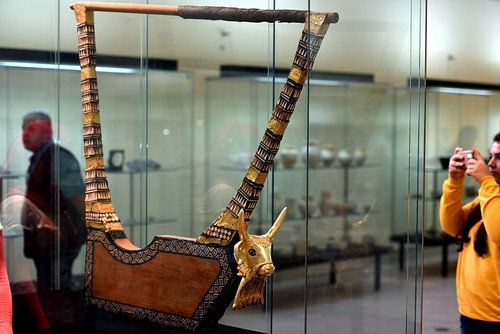
The 1st Gulf war, codenamed “Operation Desert Storm”, started in the early morning hours of January 17, 1991 CE (Baghdad Time). An extensive assault composed of very wide-spread air strikes and bombings mainly concentrated on Iraq’s infrastructure. Any civilian building, suspected of harboring a military meeting or high-ranking officials was bombed. Therefore, the Iraq Museum seemed to be a potential target. Many of the museum’s employees stayed in, protecting the museum from the very first day of the war, using Kalashnikovs; Dr. Muayad stated that he and many employees and guards stayed for more than two weeks continuously, never returning home, in spite of the very difficult situation.
On February 26, 1991 CE, the Iraqi army started retreating toward the north (to the Basrah Governorate) and fled Kuwait. The Coalition ground invasion and air strikes continued. George W. Bush, the US president, announced a ceasefire and the liberation of Kuwait on February 28, 1991 CE. By a spark ignited from Basrah on March 1, 1991 CE, the Iraqi People started a wide-spread rebellion in the south and north, against Saddam, until they were quashed violently and completely by April 5, 1991 CE. Kirkuk and Dukok rebelled against the regime:
1. The Iraq Museum survived the war and the ensuing revolt. Baghdad did not rebel. The Museum was safe.
2. Al-Nasiriyah Museum was partially looted by the rebels.
3. The Sulaymaniyah Museum was immediately secured and protected by many young men residing in the museum’s district; nothing was looted.
4. Erbil Museum was overwhelmed by looters and the director was threatened to be killed if he did not cooperate. He had evacuated all galleries before the war; only some pottery items were still on display. The looters desperately retreated; there was no gold. This museum escaped looting and damage.
5. The Museums of Basrah, Kufa, Diwaniyah, Emara, and Kirkuk were completely looted.
Dr. Muayad said that before the war, only replicas of the original objects or duplicates of some “non-significant” objects were kept in those museums. Therefore, only about 5000 objects were looted.
The Qushla Building in Kirkuk was plundered. The manuscripts were kept inside 25 large boxes. The Looters could not smuggle such large boxes swiftly. Saddam’s Republican Guards quickly entered Kirkuk and bloodily quashed the revolt. The looters escaped with the boxes but because of their large number and size, they left them in the outskirts of Kirkuk, undisturbed; only 4-5 boxes were looted. The remaining were found safe and were returned to the Iraq Museum.
The Dohuk Museum’s circumstances during the rebellion were somewhat vague, but there was much evidence of entries and vandalism. However, it seems that the plunderers were looking for gold and jewelry. None of the clay tablets were looted. Many boxes were wide open and many clay tablets were found thrown onto the ground, with military boot prints on them. It is not known whether such a mess and treading was done by the looters or Saddam’s forces. All of the contents were transferred back to Baghdad; e.g. the full collection of the so-called Tell Haddad tablets was entirely safe. Mosul did not revolt and the Iraq Museum’s documents were taken back from Hatra to Baghdad. The collection in the vault of the Central Bank in Baghdad was kept there and was not returned to the museum.
The Iraqi civilian infrastructure was almost completely destroyed by the war. This damage, compounded by the international economic sanctions, made the Museum evidently paralyzed. Then came the dilemma of the retrieval of the Kuwaiti collection of artifacts. Through many committees of the UN, Dr. Muayad Al-Damerchi completely cooperated and agreed to deliver the whole collection. Dr. Muayad said that “It was easy to ignore the unregistered collection of about 7,000 artifacts, as there was no proof of it, but we were fully cooperative to end this problem”. The Kuwaitis sent many buses and lorries, but Dr. Muayad declined this way of transport; this would easily damage many brittle artifacts on the long journey and the Iraqis would be blamed. He said, “they should be transferred through airplanes, and we were limited by the sanctions and no flights to and from Iraq were operative”. We transferred them very carefully to Al-Habbaniyah Air Base, in Al-Anbar Province. UN airplanes took them and the entire collection was given to the Kuwaitis; no single piece was seized by the Iraqis. The operation was completed in the months following the war in 1991 CE.

The Black Vacuum, 1991-2003 CE
The museum was officially closed. It was opened temporarily to the public on April 28, 1999 CE in a ceremony, coinciding with the birthday of Saddam Hussein. The international sanctions were not lifted after the liberation of Kuwait. The fruitless operation of disarming Iraq from weapons of mass destruction came in and lasted until the fall of Saddam regime on April 9, 2003 CE. As an aftermath, the Iraq Museum suffered many fatal blows; lack of funds, disconnection from the international community, cessation of the publication of the journal Sumer, scarcity of excavations, no guarding of many ancient sites, wide-spread illegal digging and smuggling of Mesopotamian artifacts, lack of public interest in Mesopotamian history, official closure of the museum to the public, and most importantly, the collapse of the concept of nationalism in many people. It was a very harsh period that had slowly, at a regular pace, undermined many social, economic, cultural, and educational aspects of the Iraqi people. The Museum and its staff were not exempt. This would explain the dramatic ransacking and plundering of the Iraq Museum in April 2003 CE.
The US-led invasion of Iraq & Operation Iraqi Freedom, 2003 CE
Trying to convince the international community that Iraq is not cooperating with the process of disarming its weapons of mass destruction, Iraq is considered part of the so-called “Axis of Evil”, and that Saddam’s regime is cooperating with Bin Ladin’s Al-Qaida Group, then US president George W. Bush (junior), in 2002 CE, organized and led an international coalition to “disarm Iraq and to free Iraqi People”. In late 2002 CE, it was obvious that another bloody military intervention would take place. The sound of the drums of war was resonating in early 2003 CE. Already exhausted and annihilated, the Iraq Museum started an emergency plan to counteract the war:
1. The State Board of Antiquities and Heritage of Iraq and the Iraq Museum asked the government for a fund to build protective walls around the museum’s complex and to install advanced electronic security systems. Because of technical issues, the walls’ construction was not completed; only one wall behind the Assyrian Gallery was made. The electronic security systems of the gates and galleries, likewise, were defunct. There was a plan to close and seal off, via brick walls, the main entrance to the museum, the back entrance into the Museum’s new storage rooms, and the windows of the library.
2. In February 2003 CE, the museum concluded all of its activities and prepared to face the war. The Assyrian wall reliefs and some of the large statues were kept inside their galleries, protected by foam and sandbags. Many objects were transferred to other parts of the Museum, in storage rooms (such as Room 104 and Room 103), inside boxes and cabinets. Other boxes were transported by five employees to a “secret place” (one of them was reportedly an anti-nuclear bombs shelter in Western Baghdad). This process of packing and translocation was completed between February 20 to 23, 2003 CE. The contents of all other Iraqi Museums (apart from those in Iraqi Kurdistan) were transported to the Iraq Museum, two months before the war. Some, not all, of the museum’s library collection was stored in metal boxes and transported outside the State Board, where they were stored in a safe place. “Room 104” housed the bulk of the most important and priceless objects, including other museums’ collections and many recently excavated gold treasures from Harba, Kutha, and Anbar (the discovery of these treasures was not disclosed to the media at that time). All computers, camera gear, and some important devices were also stored there. The door was locked with a key. That’s it! No other additional protective measure was taken to fortify this critical room. Dr. Nawala Ahmad Mahmood Al-Mutawalli (then director of the Iraq Museum) requested 7,000,000 Iraqi Dinars to install new protective iron doors (including one for this room), but the government declined, saying that the cost was too high. Another source told me that the Museum and the State Board received 96,000,00 Iraqi Dinars from the Government and some doors were made, but there was administrative and financial corruption, and therefore, Dr. Nawala declined to sign off the contract and to receive these doors.

3. On March 10, 2003 CE, the 47,000 manuscripts belonging to the Iraqi Directorate of Manuscripts were transferred and stored in a safe place.
4. A security team, composed of the Museum and the State Board’s employees as well as some volunteers, was formed and supplied with food, water, and motorbikes and bicycles (another source told me that there were no volunteers and that the number of the guards was 90, headed by Lieutenant General Mohammad Abdulqadir Al-Daghestani). A total of 30 persons/day were supposed to guard the Museum against any forced entry. An additional force of 11 security men from the General Directorate of Security joined the team and was stationed within the garden, outside the museum.
5. Termination of all excavation and maintenance works at archaeological sites, all around Iraq, except Iraqi Kurdistan.
Meanwhile, during the weeks and days preceding the war, many international organizations urged the USA to protect Iraq’s heritage amidst this war. The war began in the early morning hours of March 20, 2003 CE (Baghdad Time) with an extensive assault.
1. March 20, 2003 CE: all of the Museum and State Board’s employees stopped attending the museum; only people participating in the security/emergency plan attended the museum. Day after day, the number of people guarding the museum was declining. A few days before the fall of Saddam’s regime, only 17 employees and 3 security guards were inside the museum’s complex to protect it.
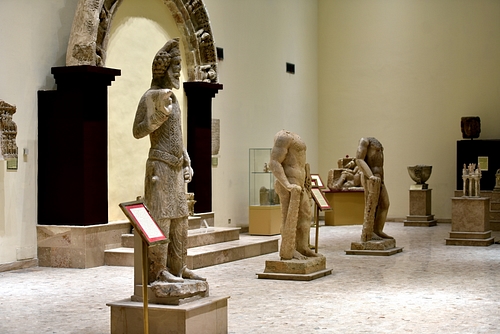
2. April 5 and 6, 2003 CE: The American army has reached the southern outskirts of Baghdad. “The Battle of Baghdad” is imminent. Dr. Nawala handed over the “keys” to Dr. Jaber Khalil Al-Tikriti (then president of the State Board of Antiquities and Heritage of Iraq) and Dr. Donny George (then director of the department of research and studies), fled Baghdad and took her family to Diyala on April 6, 2003 CE.
3. April 8, 2003 CE: The American troops engaged with the Iraqi Army and its allied militias stationed near the Ministry of Culture and Media, near the museum. Some of the militias’ members entered into the museum’s complex, through the fence, and some Iraqi snipers took their positions there. An American tank responds and fires at the museum’s façade. The situation was very critical and members of the emergency plan gathered. At around 8:00 AM, a meeting was held and the following people attended: Dr. Jaber Khalil Al-Tikriti, Dr. Donny George (a source told me that he was the head of the emergency plan), the late Mr. Rabi Al-Qaisi (then director of department of maintenance), Mr. Mohammad Nabih Abdulfattah (then director of the department of administration and head of the emergency plan team, another source stated), Mr. Mohammad Abdulrazzaq Al-Abdi (director of the department of finance), and captain Jasim Hussein (head of the security troops).
Captain Jasim suggested to the above people that he call for a group of soldiers from the General Directorate of Security to come and if a clash starts in the museum, “they should help him fight”. “They” declined stating that “they are civilians and not soldiers”. Jasim’s other suggestion was to close all entrances into the museum and seal them off, using iron cabinets, and that they can defend the museum from outside. Once again, they “declined”. The guarding and security team of the museum (a total of 17 men on that day) was ordered by Mr Nabih to leave and evacuate the museum; another person told me that Dr. Donny was the person who gave that order and told the security guards to leave. Dr. Jaber, Dr. Donny, and a very few employees were the only persons there. I have been told that somewhere, between 2:00 PM to 6:00 PM, Dr. Donny told all of the remaining men to flee the museum and he went with Dr. Jaber outside, through the back door. Only two “non-armed” employees already residing in the museum stayed; Mr Mushtaq Talib (driver) and the late Mr Kadhim Muhsen (an elderly man; janitor). Therefore, the museum was left alone, facing its destiny of rape.
4. April 9, 2003 CE: in the afternoon of that day, the dramatic and Hollywood-ish way of toppling Saddam’s bronze statue at the Al-Firdaws roundabout marks the collapse of that regime and the occupation of Iraq. People were shocked by the speed Baghdad fell, without any resistance. The museum was left alone, vulnerable and entirely unsecured. People were looting many governmental buildings, and a nearby ministry building was plundered by many people in front of the American tanks and troops stationed at the museum’s roundabout, meters away from the museum’s complex. Therefore, the process of ransacking and plundering of the Iraq Museum might well have started later on that day, not on April 10. People entered the museum through its rear door after some “unknown non-Iraqi men” asked a crowd of curious people to “enter”.
5. On April 10, 2003 CE: the very first employee of the museum to arrive and witness the looting was the telephone operator, Mr Nidhal Natiq. He stated that he saw men, faces painted with a black pigment, smashing the doors and asking people to enter and loot the contents; their accent was a non-Iraqi one. They threatened to kill him after he asked them to stop damaging the doors; he immediately returned back home. Two other employees arrived on the same day, but independently of each other, and saw a wave of men, women, and even children occupying the building, stealing whatever they could. Both men retreated, helpless and hopeless. The day of April 11, 2003 CE, was another day for looters. Several witnesses saw many non-Iraqi people in the chaos, from several nationalities. The American forces were watching; they had “no orders to intervene”.
6. April 12, 2003 CE: shocking images and live footage of the looting conveyed by the media incited an international outcry (a German media agency team was the first one to notice the ransacking). The late Mrs Nidhal Amin was the person who appeared in the footage, shouting and chasing the looters. The BBC was the first news agency to broadcast heartbreaking images and footage from inside the museum. In the afternoon of that day, many employees and members of the public, having heard of the catastrophe, joined the museum, equipped with their personal weapons, and tried to defend it against the overwhelming wave of mobs, using iron bars and rifles.
7. April 13, 2003 CE: Dr. Jaber Al-Tikiriti and Dr. Donny George were the last high-ranking officials to leave the museum on April 8, 2003 CE and were the last ones to join their employees on April 13, 2003 CE (and that would be after 4 days), after the situation had calmed down a little bit. The museum’s staff were still defending the museum alone. Before going to the museum, Donny and Jaber went to meet a high-ranking American officer in Palestine (or Babylon) Hotel; they asked him to send a force and secure the museum (which he did not). Dr. Muayad said that he and Mrs Hanan Shakir went to Chinese Xinhua News Agency’s manager, Mr Jamal Al-Naqshbandi, and gave them a telefax to be delivered to the Director General of UNESCO through the agency’s office in Paris, France; Dr. Muayad said that I signed the telefax using the phrase of “a number of Iraqi archaeology scholars”. The request was to inform him about the catastrophic situation of the Iraqi heritage and the looting of the Iraq Museum.
8. April 16, 2003 CE: After idly watching the looting for six days with no order to intervene, the American troops finally entered and secured the museum. Approximately, 15,000 objects were looted, and many relics and halls and rooms were vandalized.
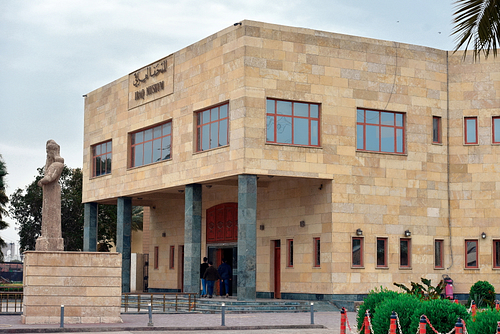
After a few days, I went to the Palestine Hotel to inform the Americans that the Central Bank of Iraq is flooded by gangs trying to break in and loot its content. There were street fights and many gang members were killed in the process. A large collection of priceless objects was kept there. I asked him to protect the Bank. It was obvious that they had no idea about the Iraq Central Bank and the Americans brought a map of the area. I showed them the location. (Dr Muayad)
That was during the short “reign” of Lieutenant General (retired) Jay Garner, then Director of the Office for Reconstruction and Humanitarian Assistance of Iraq. It was not until June 1, 2003 CE, when the flooded vault of Central Bank was opened in the presence of the media as well as many Iraqi and American officials. Dr. Nawala opened the metal cabinets. The Iraq Museum objects were safe and the media documented that the treasure of Nimrud was there. That would conclude this black comedy.
In spite of the turmoil and turbulence over 90 years, the Iraq Museum has survived, several times, many assassination attempts. The building stands there majestically, each and every day, ready to accommodate its visitors and reflects the sunshine of the dawn of humanity. More and elaborate details about the Iraq Museum’s history can be found in my previous article, The Iraq Museum: A Brightness in the Darkness. Viva Mesopotamia, viva Iraq, forever and for good!
Acknowledgments:
Special gratitude goes to Dr. Muayad Saed Al-Damerchi for his great help and cooperation, throughout several interviews. I sincerely thank all the people whom I interviewed; their help and cooperation are very much appreciated. The article by Fawziyah Mahdi Al-Maliki (see below; article in Arabic) is very helpful and has confirmed the information I got through my interviews, although there were many discrepancies.
Bibliography:
1. Personal interviews.
2. Al-Maliki, F., "News and Correspondences: The Events of Iraq Museum Looting in 2003," Sumer 2007.

